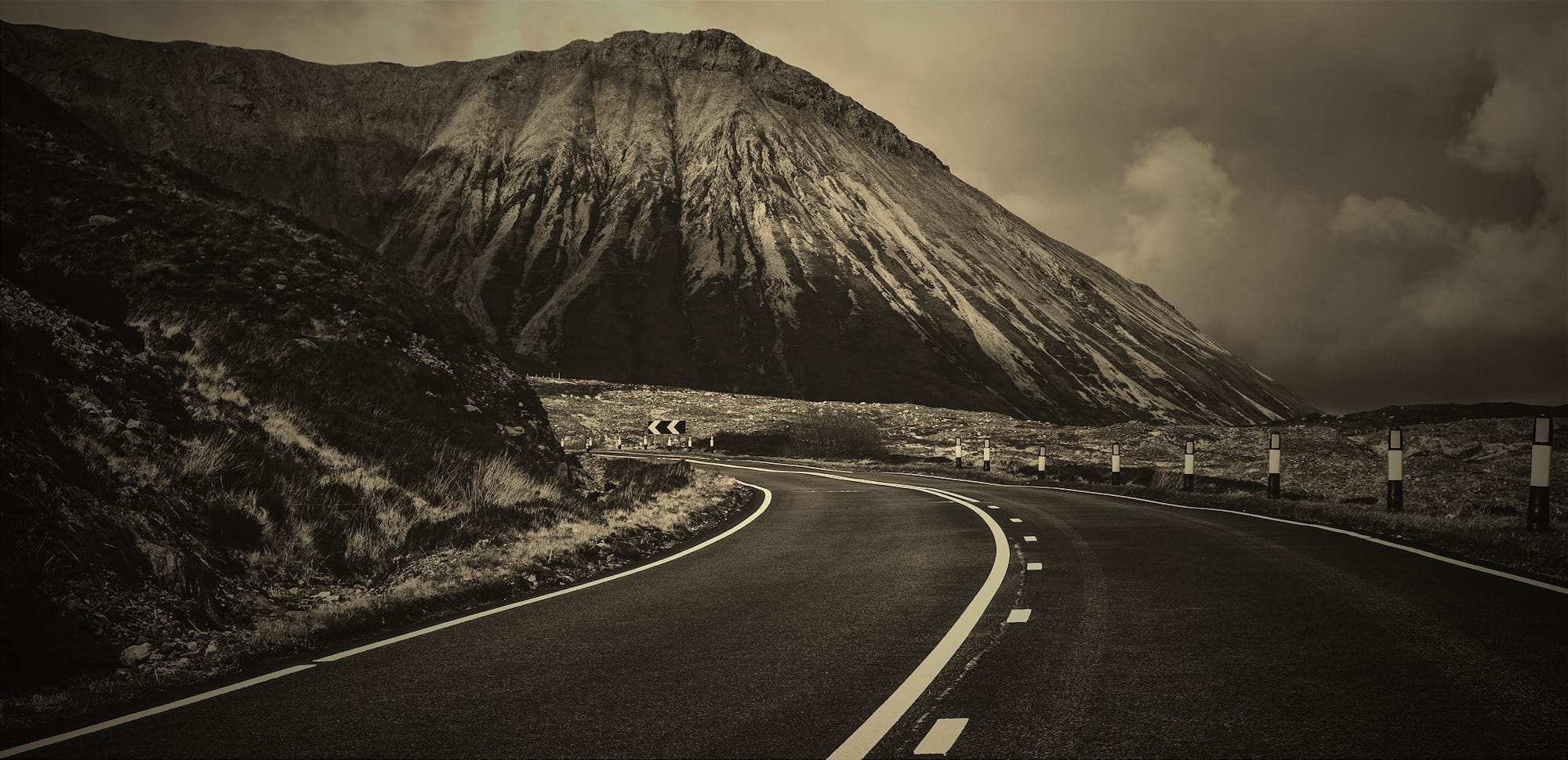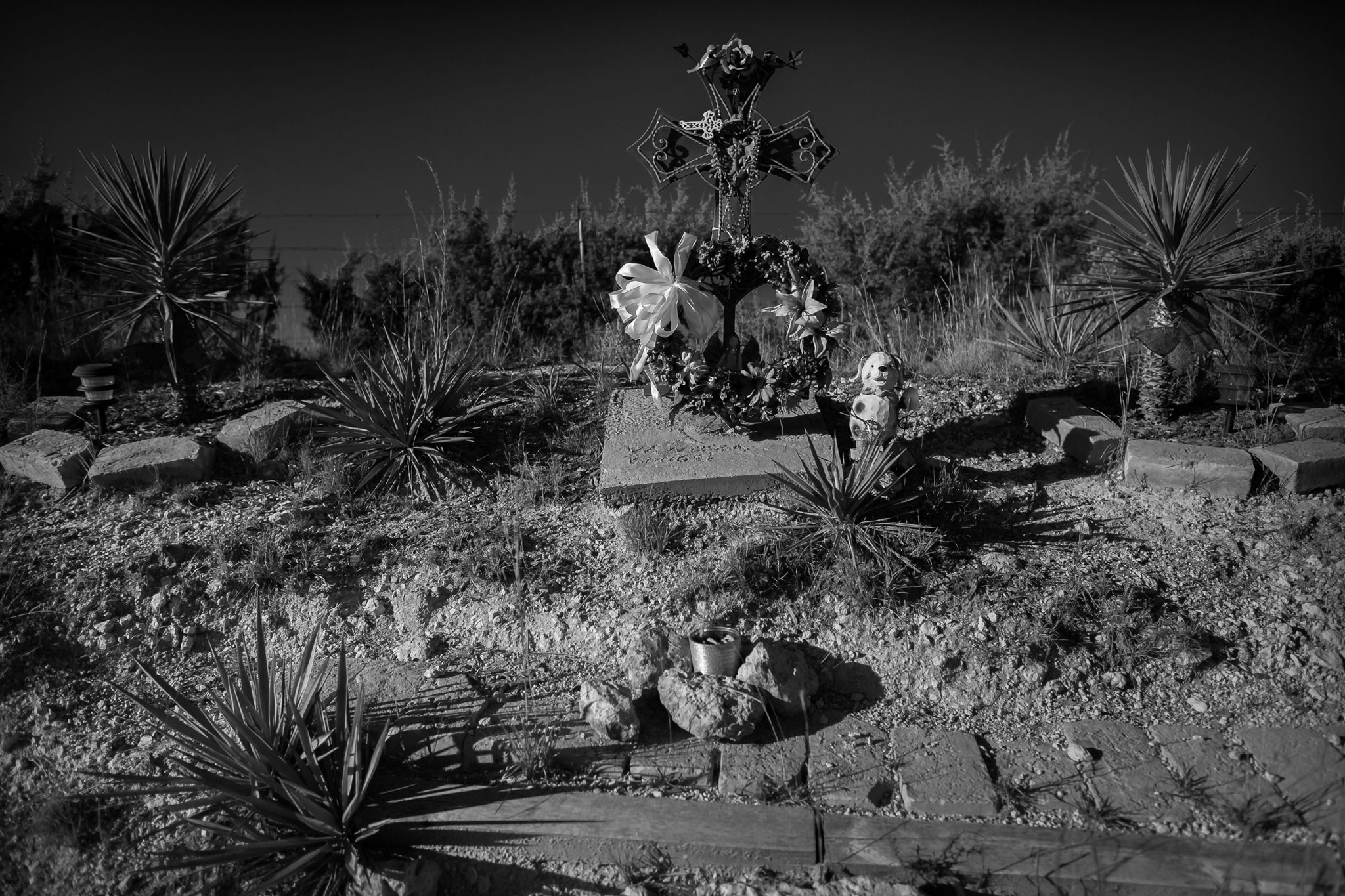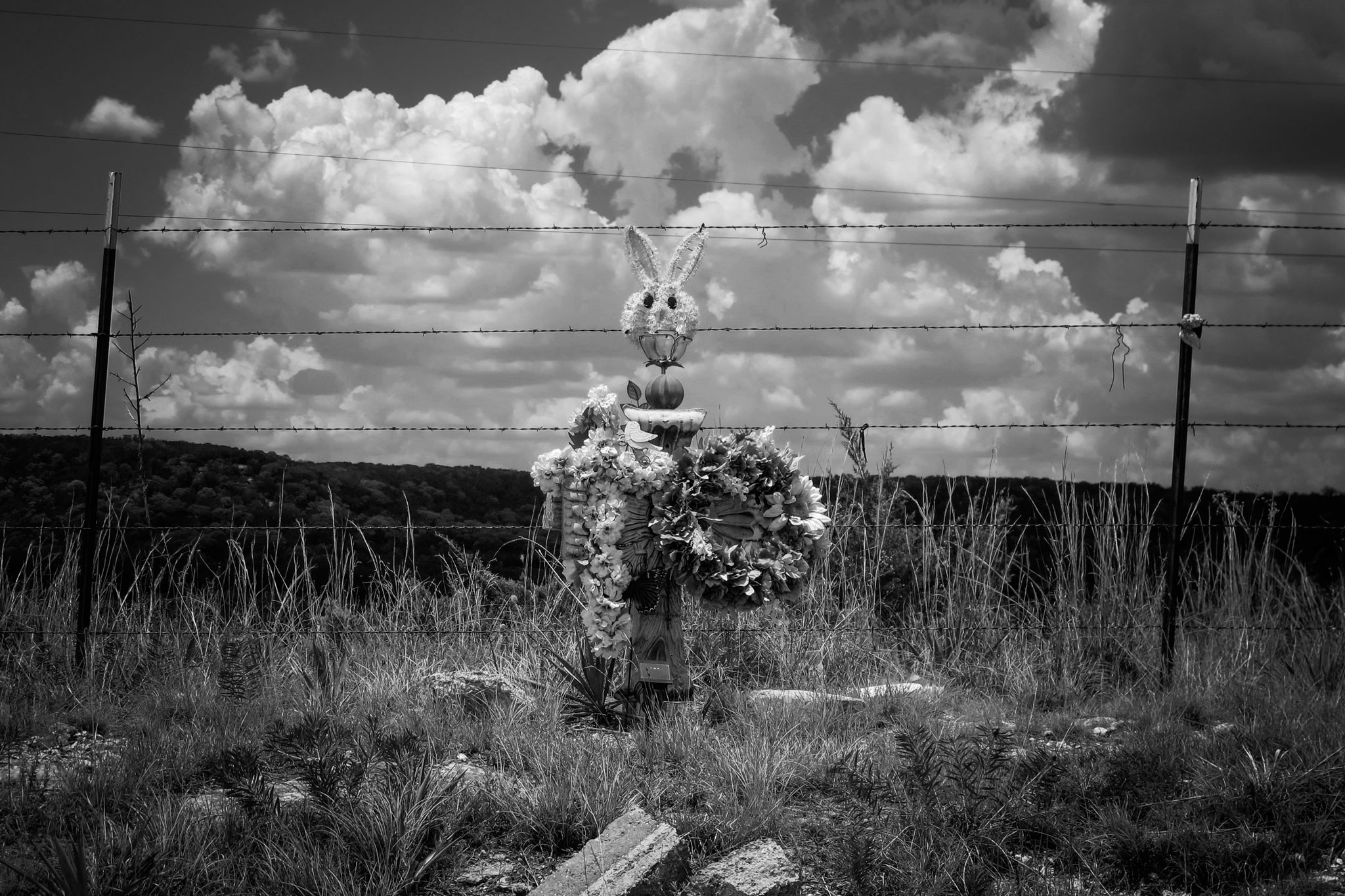First Marker, Lasting Echo
Quiet altars, endless miles, enduring memory. . .

Scraps of devotion — that’s what drew my eye the first time I spotted the roadside marker alongside U.S. Highway 67, just south of Glen Rose. At a glance, it looked like a simple cross: light-gauge metal rod twisted and curled into scrolls, mounted on a flat sheet-metal backing. Plastic flowers were woven through its curves, and a small ceramic puppy statue stood sentinel. In the sidelight of a late afternoon sun — slanting in from the southwest — the blossoms glowed like tiny lanterns against the dry grass and scrub.
These roadside altars don’t seek to elevate tragedy into heroism. Instead, they make the simple declaration that someone was loved and cannot be forgotten.
I had chosen this two-lane highway over the interstate, preferring the small towns and open vistas to the monotony of freeways. But I wasn’t looking for a memorial; I simply slowed when the marker caught my eye. The pavement was so hot that you could feel it through your shoes. Someone had likely brought flowers earlier, still fresh in the heat of the Texas summer, determined to honor a memory before the sun vanished. The cross leaned just a fraction, as though partly balanced by the gravity of loss.
In that warm light, every detail spoke of care and grief. The plastic petals were brittle at the edges, their colors faded by constant sun. The puppy statue — its innocent grin fixed in ceramic — felt both out of place and perfect: a testament to the fragile incongruity of mourning. I thought of a young life interrupted — someone on the cusp of adulthood, with plans and laughter and a future yet unwritten. None of that future would come now, and all that remained was this small altar of steel, plastic, and clay.
On the shoulder, I bent at the waist to photograph the scene, mindful of traffic rushing by. There was no desire to dramatize or mythologize — only to bear witness. The camera’s shutter clicks felt sacred, a silent promise that this marker, and the story it guarded, would not vanish into roadside dust without acknowledgment. Later, the image on my screen revealed not just a cross and a statue, but a convergence of sorrow and devotion — an ache transformed into tangible artifacts.
Only a couple of years passed before I returned to the same spot. By then, the original puppy had disappeared, as had the wireframe cross, but fresh flowers and a new wreath lay had been carefully place a new, now wooden support. I noticed that someone had replaced a few of the flowers and straightened the shrine, demonstrating that memory demands tending. On that later visit, I also discovered this new, second marker — one crowned with a fuzzy rabbit head, its colors still bright. That juxtaposition — puppy then rabbit — felt like grief’s evolving vocabulary, a reminder that survivors use whatever symbols suit their sorrow.
These roadside altars don’t seek to elevate tragedy into heroism. Instead, they make the simple declaration that someone was loved and cannot be forgotten. They stand in unadorned witness to a fragile truth: a life ended too soon, and yet love endures in plastic blossoms and ceramic keepsakes. Every traveler who pauses for a moment at these markers is reminded to drive a little more carefully, to buckle seat belts without fail, to appreciate the gravity of each turning moment.
The first marker I photographed taught me that grief need not be grand to be profound. A few common objects — twisted metal, faded flowers, a smiling statue — can carry the weight of absence and hope. In that late afternoon light, I felt the highway slow in my mind, as if time itself had paused to acknowledge what had been lost. As I returned to my travels, with cattle grazing beyond the fence, the hum of a pickup truck’s engine passing, headed back toward Dallas, even the trickle of wind through dry grass all seemed to fall silent in respect.
Whenever you find yourself on a sunlit ribbon of highway, slow your pace as you approach the markers you’ll inevitably see. Give yourself permission to feel both sorrow and solace. Notice how the light falls on plastic petals, how grief and care coexist in a single scene. And remember that the most ordinary stretch of road can hold a reservoir of quiet compassion.
Because amid the rush of engines, every memorial reminds us: we’re all travelers, and sometimes slowing down to honor what’s been lost is the truest way to appreciate what remains.
Have you ever come across a roadside memorial that made you slow down and reflect — or have you ever placed one of these roadside shrines?
— Lawrence


Roadside markers south of Glen Rose, TX
Thanks for reading Still Stories! Subscribe for free to receive new posts and support my work.

